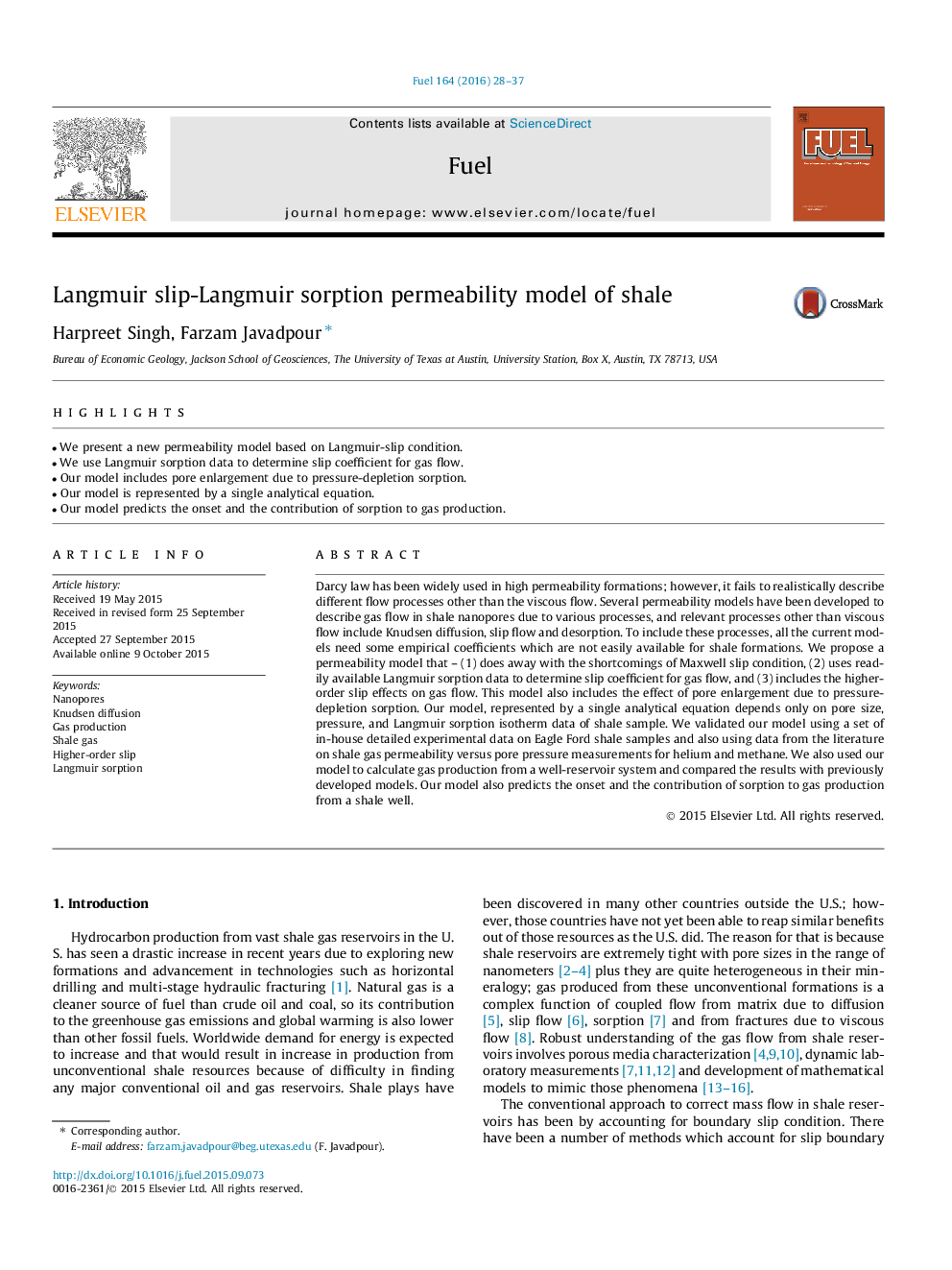| Article ID | Journal | Published Year | Pages | File Type |
|---|---|---|---|---|
| 205369 | Fuel | 2016 | 10 Pages |
•We present a new permeability model based on Langmuir-slip condition.•We use Langmuir sorption data to determine slip coefficient for gas flow.•Our model includes pore enlargement due to pressure-depletion sorption.•Our model is represented by a single analytical equation.•Our model predicts the onset and the contribution of sorption to gas production.
Darcy law has been widely used in high permeability formations; however, it fails to realistically describe different flow processes other than the viscous flow. Several permeability models have been developed to describe gas flow in shale nanopores due to various processes, and relevant processes other than viscous flow include Knudsen diffusion, slip flow and desorption. To include these processes, all the current models need some empirical coefficients which are not easily available for shale formations. We propose a permeability model that – (1) does away with the shortcomings of Maxwell slip condition, (2) uses readily available Langmuir sorption data to determine slip coefficient for gas flow, and (3) includes the higher-order slip effects on gas flow. This model also includes the effect of pore enlargement due to pressure-depletion sorption. Our model, represented by a single analytical equation depends only on pore size, pressure, and Langmuir sorption isotherm data of shale sample. We validated our model using a set of in-house detailed experimental data on Eagle Ford shale samples and also using data from the literature on shale gas permeability versus pore pressure measurements for helium and methane. We also used our model to calculate gas production from a well-reservoir system and compared the results with previously developed models. Our model also predicts the onset and the contribution of sorption to gas production from a shale well.
